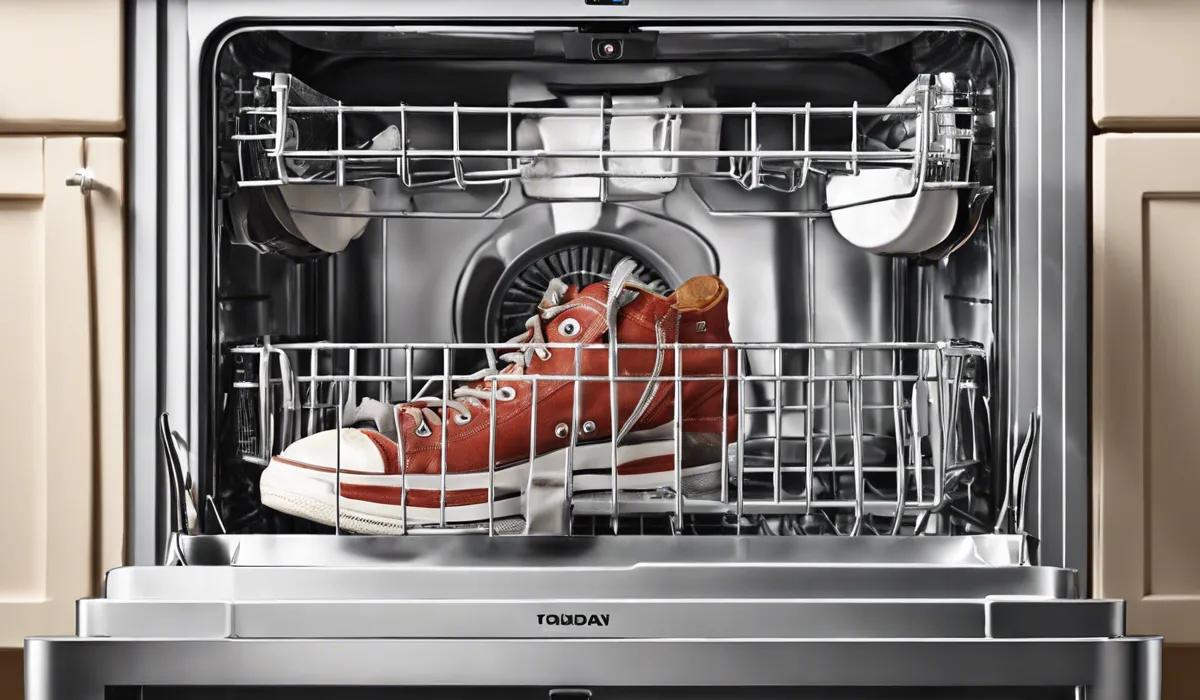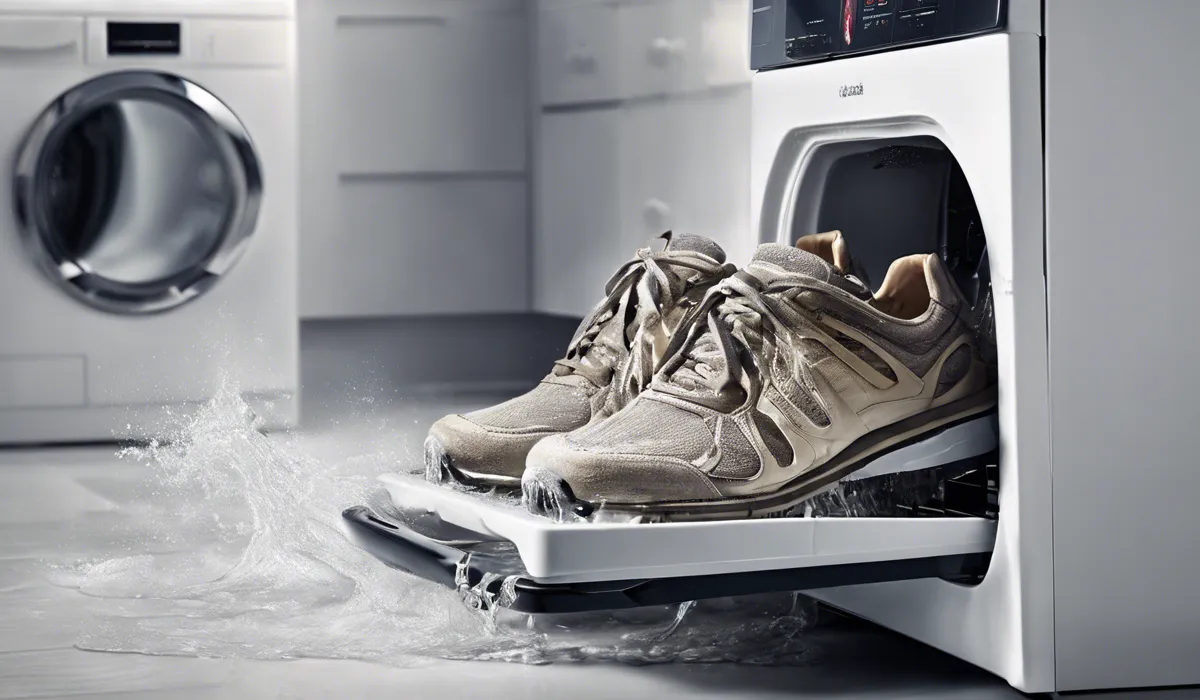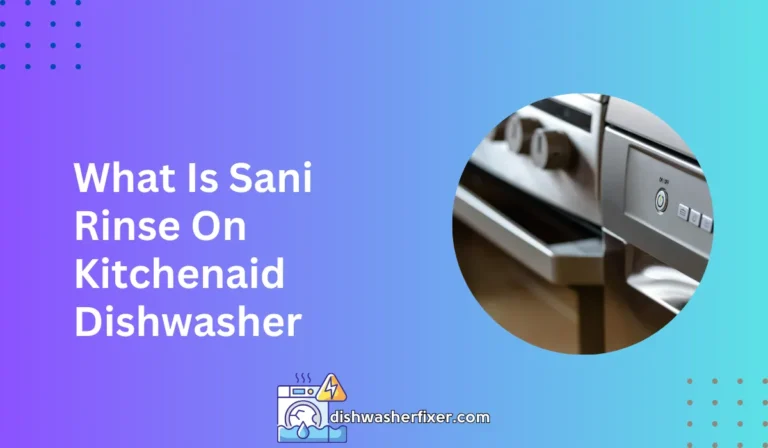How to Wash Shoes in Dishwasher: Sparkling Results!
Remove insoles and laces from shoes. Place shoes on the top rack of the dishwasher. Add a small amount of detergent. Run a gentle cycle without heated dry. Air-dry shoes thoroughly post-wash.
Preparing Your Shoes for the Dishwasher

Checking the Material: Ensuring Shoes are Dishwasher Safe
Before you pop your shoes into the dishwasher, it’s essential to check if they’re fit for this cleaning method. Not all shoes can handle the rigors of a dishwasher cycle.
Canvas, fabric, and some synthetic materials are usually dishwasher-safe. However, leather, suede, or shoes with delicate embellishments are not. If you’re uncertain, glance at the manufacturer’s label or visit their website for guidance.
Removing Excess Dirt: Pre-rinsing and Brushing Off Loose Soil
It’s important to remove as much dirt as possible before washing your shoes in the dishwasher.
Knock the soles together to dislodge any caked-on mud. Rinse them under a faucet or use a soft brush to scrub away loose soil. This step helps prevent the dirt from clogging your dishwasher and ensures a more thorough clean.
Taking Out Laces and Insoles: Washing Them Separately or by Hand
Always remove laces and insoles from your shoes. Laces can be washed in a laundry bag or by hand with soap and water.
Insoles, if washable, should be cleaned separately to maintain their shape and integrity. This process also allows the dishwasher to reach every nook inside the shoes for a complete clean.
Securing Shoes: Using a Dishwasher-Safe Bag or a Rack to Prevent Damage
When placing shoes in the dishwasher, secure them in a dishwasher-safe bag or on a rack to prevent them from tumbling around. This helps protect both the shoes and the dishwasher from potential damage.
Ensure the shoes are placed on the top rack to avoid the heating element at the bottom.
Setting Up the Dishwasher

Choosing the Right Cycle: Selecting a Gentle, Cold Water Cycle
When setting up the dishwasher, opt for a gentle cycle with cold water to prevent any damage to your shoes. High temperatures can warp and shrink materials, so it’s crucial to use a cycle that’s as gentle as possible.
Adding the Appropriate Detergent: Using a Mild, Bleach-Free Detergent
Use a mild, bleach-free detergent for washing your shoes. Harsh chemicals can fade colors and weaken shoe materials over time. A small amount is sufficient, as too much soap can leave a residue on your shoes.
Balancing the Load: Distributing Other Items or Using Dishwasher-Safe Weights
To keep your dishwasher balanced, distribute other dishwasher-safe items or use weights. This ensures an even clean and prevents the machine from becoming unbalanced, which could lead to damage or poor performance during the cycle.
Ensuring Proper Ventilation: Leaving Enough Space for Water and Air Circulation
Make sure there’s enough space around your shoes for water and air to circulate freely. This not only guarantees a thorough clean but also helps with the drying process. Proper ventilation is key to preventing mold and bad odors.
Post-Wash Care for Shoes

Drying the Shoes: Air Drying Techniques and Tips
After the wash cycle, remove your shoes from the dishwasher and let them air dry. Place them in a well-ventilated area away from direct sunlight, which can cause fading. To speed up the drying process, you can use a fan or stuff the shoes with paper towels to absorb moisture.
Reassembling the Shoes: Reinserting Dried Insoles and Lacing Up
Once your shoes are completely dry, it’s time to put them back together. Reinsert the insoles and thread the laces back in. If you’re unsure how to lace your shoes properly, look for a guide that suits your shoe type or personal style.
Maintaining Shape: Using Shoe Trees or Stuffing with Paper
To help your shoes maintain their shape during the drying process, use shoe trees. If you don’t have shoe trees, stuffing your shoes with paper can also help them hold their form and absorb excess moisture.
Final Touches: Checking for Any Remaining Spots and Applying Protector Spray if Necessary
Once your shoes are dry, give them a final inspection for any leftover spots or stains. If you spot any, gently clean the area with a soft, damp cloth.
To keep your shoes looking great and to protect them from future stains and water damage, consider applying a protector spray.
FAQs About Washing Shoes in the Dishwasher
Can I wash my shoes in the dishwasher?
Yes, you can wash your shoes in the dishwasher by removing insoles and laces, placing them on the top rack, and running a gentle cycle without heated dry.
Should I remove anything from my shoes before washing them in the dishwasher?
Yes, you should remove the insoles and laces from your shoes prior to placing them in the dishwasher.
Where should I place my shoes in the dishwasher?
Place your shoes on the top rack of the dishwasher for the best washing results.
How much detergent should I use when washing shoes in the dishwasher?
Add only a small amount of detergent when washing shoes in the dishwasher to avoid excessive suds.
What is the best way to dry shoes after washing them in the dishwasher?
After washing, air-dry your shoes thoroughly away from direct heat or sunlight.
Final Thoughts
To effectively wash shoes in a dishwasher, remove the insoles and laces first, then position the shoes on the top rack.
Utilize a modest amount of detergent and opt for a gentle wash cycle without activating the heated dry option. After the cycle is complete, ensure shoes are air-dried thoroughly before use.






